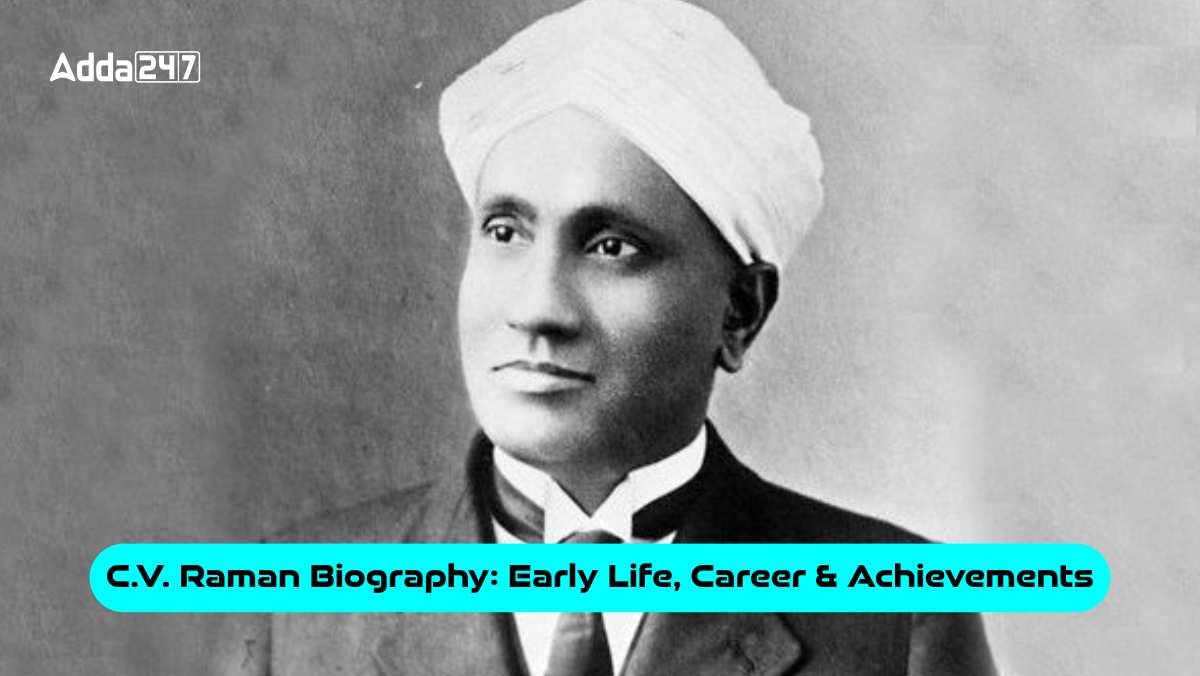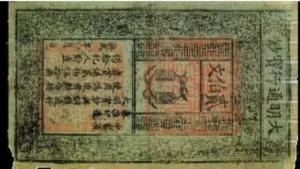Dr. Chandrasekhara Venkata Raman, or C.V. Raman, was a famous Indian physicist known for his discovery of the Raman Effect. He was the first Indian to win the Nobel Prize in Physics in 1930. His work helped scientists understand how light interacts with materials. Raman’s discoveries continue to be useful in many fields, including chemistry and medicine. His contributions made India proud and inspired many young scientists to follow in his footsteos.
Key Details of C V Raman
| Name | Dr. Chandrasekhara Venkata Raman |
| Birth date | 7th November 1888 |
| Birth place | Tiruchirappalli, Tamil Nadu |
| Father | R. Chandrasekhara Aiyer |
| Mother | Parvathi Ammal |
| Spouse Name | Lokasundari Ammal |
| Death | 21st November 1970 |
| Place of Death | Bangalore, India |
| Discovery | Raman Effect |
| Awards | Matteucci Medal, Knight Bachelor, Hughes Medal, Nobel Prize in Physics, Bharat Ratna, Lenin Peace Prize, Fellow of the Royal Society. |
C.V. Raman – Early Life and Education
C.V. Raman was born into a south Indian Brahmin family, the son of R. Chandrasekhara Aiyer and Parvathi Ammal. His father’s role as a lecturer in mathematics and physics created an academic environment at home, igniting Raman’s curiosity and passion for science from an early age. His exceptional academic prowess shone through as he passed his matriculation at the age of 11 and completed his 12th class on a scholarship by the age of 13. In 1902, he joined Presidency College and remarkably, was the only student to receive a first division. His academic journey continued with a Master’s degree in Physics, during which he set new records. In 1907, he married Lokasundari Ammal, with whom he had two sons, Chandrasekhara and Radhakrishnan.
C.V. Raman – Scientific Career
Although C.V. Raman initially pursued a career in financial civil services, his unwavering passion for science led him to spend his spare time in a laboratory at the Indian Association for Cultivation of Sciences in Calcutta (now Kolkata). Juggling a demanding job with his research endeavors, he worked tirelessly to further his scientific interests, even conducting experiments late into the night. Despite limited resources in the laboratory, Raman’s dedication and perseverance led to the publication of his findings in prominent international journals such as ‘Nature,’ ‘The Philosophical Magazine’ and ‘Physics Review.’ His early research focused on the fields of vibrations and acoustics.
In 1917, he joined the University of Calcutta as the first Palit Professor of Physics, marking the beginning of a distinguished career in academia. He later became a Professor at the Indian Institute of Science in Bangalore from 1933 to 1948. In 1948, he assumed the role of Director at the Raman Institute of Science in Bangalore from 1933 to 1948. In 1948, he assumed the role of Director at the Raman Institute of Research, which he had established and endowed himself.
C.V. Raman – Works and Discovery
C.V. Raman’s contributions to science extended beyond his groundbreaking discovery of the Raman Effect. He established the Indian Journal of Physics in 1926, serving as its editor. He was also instrumental in founding the Indian Academy of Sciences, where he played a pivotal role as its President since its inception. Additionally, he presided over the Current Science Association in Bangalore, responsible for publishing ‘Current Science’ in India.
Raman’s pivotal moment came in 1928 when he wrote an article on the theory on the theory of musical instruments, which set the stage for his ultimate discovery of the Raman Effect. This discovery, made on 28th February 1928, showed that when light passes through a transparent material, some of the deflected light changes its wavelength, a phenomenon that came to be known as the Raman Effect. This groundbreaking research earned him the Nobel Prize in Physics in 1930, making him the first Indian to receive this prestigious honor.
C.V. Raman’s research extended to various areas, including the diffraction of light by acoustic waves of ultrasonic and hypersonic frequencies and the effects produced by X-rays on infrared vibrations in crystals exposed to ordinary light. He also delved into the fundamental problems of crystal dynamics and conducted extensive studies on the structure and properties of diamonds, as well as the structure and optical behavior of iridescent substances such as pearls and agate. His interests ranged from the optics of colloids to electrical and magnetic anisotropy and the physiology of human vision.
National Science Day
National Science Day is celebrated in India on February 28th to commemorate the Nobel Prize-winning physicist Sir C.V. Raman’s discovery of the Raman Effect in 1928. This phenomenon revolutionized the field of science by showcasing the scattering of light. The day serves as a reminder of Raman’s contributions to science and encourages scientific temperament and innovation nationwide.
C.V. Raman – Awards and Honors
C.V. Raman’s exceptional contributions to the field of science were widely recognized and honored:
- He was elected as a Fellow of the Royal Society in 1924 and Knighted in 1929.
- He received the Nobel Prize in Physics in 1930 for his discovery of the Raman Effect.
- In 1941, he was awarded the Franklin medal.
- V. Raman received the Bharat Ratna in 1954.
- In 1957, he was honored with the Lenin Peace Prize.
- He was also recognized as an International Historic Chemical Landmark by the American Chemical Society and the Indian Association for the Cultivation of Sciences in 1998.
National Science Day is celebrated in India every year on February 28 to commemorate the discovery of the Raman Effect and to pay tribute to Dr. C.V. Raman, whose groundbreaking work illuminated the world of physics.
C.V. Raman – Death and Legacy
C.V. Raman’s legacy lives on through his groundbreaking discoveries and innovative research. He passed away on 21st November 1970, but his impact on the world of physics endures. His work continues to inspire scientists and researchers, not only in India but all over the globe. C.V. Raman s celebrated as one of India’s most respected and revered scientific minds, a pioneer who illuminated the world through his pioneering work on the nature of light. National Scientific Day, observed on 28th February, is a testament to his lasting influencing and the enduring power of scientific discovery.



 Which Country First Introduced the Paper...
Which Country First Introduced the Paper...
 Which Country is known as the Land of Si...
Which Country is known as the Land of Si...
 Which Place is known as the Florence of ...
Which Place is known as the Florence of ...







